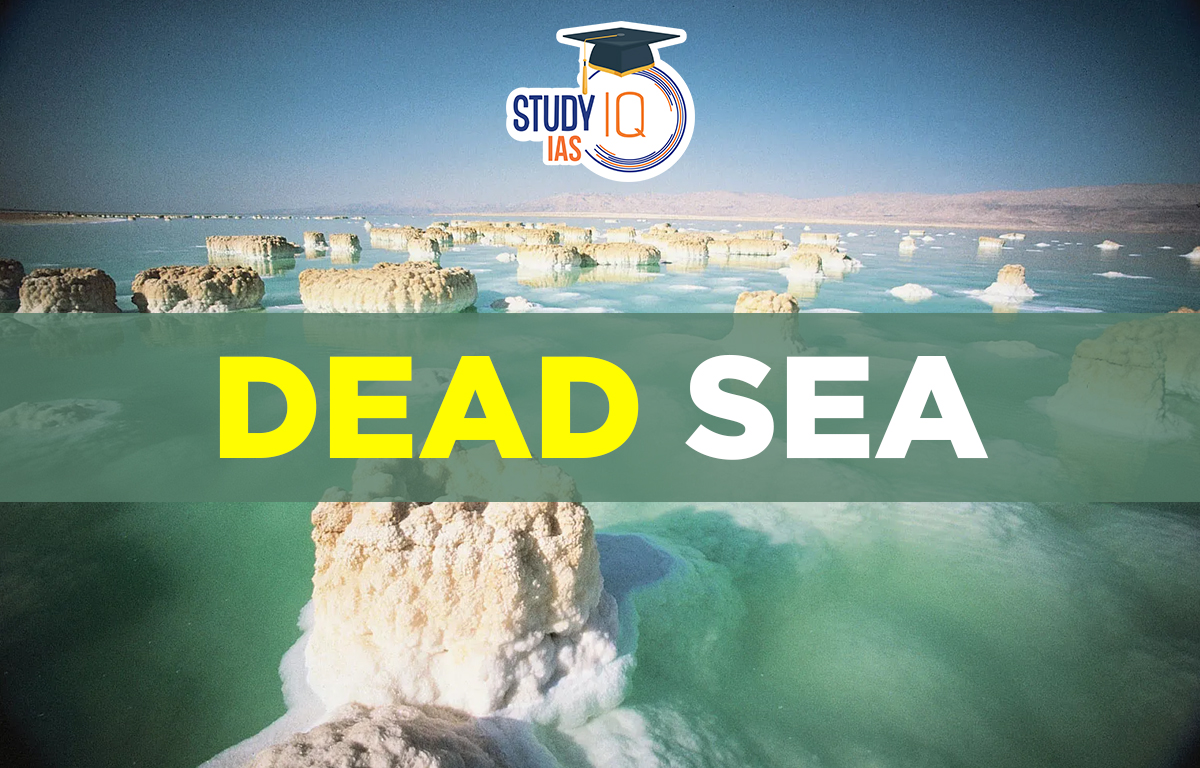Table of Contents
Dead Sea
The Dead Sea is a salty lake in the Judean desert of southern Israel, near Jordan. It was formed about four million years ago and is the lowest point on the Earth. The region has a dry climate with sunny skies, high temperatures, and little rain. Its extreme conditions create a unique landscape and contribute to its high salt levels, making it one of the saltiest bodies of water in the world.
The shores of the Dead Sea sparkle with crystallized salt in white and turquoise colors as the sun evaporates the water. Originally, the Dead Sea had two basins, but by the late 1970s, the water level dropped significantly, drying out the southern basin. This change made the peninsula of Al-Lisan extend eastward, separating the northern and southern basins with dry land. The southern basin is now filled with large evaporation pools for salt extraction, and water is pumped in from the northern basin to keep it wet. The air smells of sulfur from the mud, which is rich in bromine. The northern beaches are muddy, while the southern beaches have unique salt formations. The water appears almost oily because of its high salt content and density.
Read More: Atlantic Ocean
Dead Sea Bordering Countries
The Dead Sea is situated between Israel and Jordan and forms part of the border between the two countries. The Dead Sea is fed mainly by the Jordan River, which enters the lake from the north.
Read More: Caribbean Sea
What are the river that feeds the Dead Sea?
Before 1960, the Jordan River was the main water source for the Dead Sea, along with some small springs around the lake. Now, after diverting water from the Sea of Galilee, the only sources of water are sulfur springs, wastewater, and occasional rain or flash floods.
Dead Sea Geography
The Dead Sea has the lowest elevation on land and is the world’s lowest body of water. The water in the Dead Sea is about ten times saltier than ocean water, making the sand and pebbles at the edge sparkle with crystallized salt. While there are small springs around the lake, the only major water source is the Jordan River. There are no streams that flow out of the Dead Sea. Clinical studies have shown that the high mineral concentration of its water and mud, zinc, and oxygen-rich air can treat a variety of ailments, including psoriasis and other skin conditions, asthma, rheumatism, high blood pressure, and more.
Read More: Adriatic Sea
Dead Sea Formation
The creation of the Dead Sea is the subject of conflicting theories. The Jordan River Valley was frequently inundated by water from the Mediterranean Sea about 3.7 million years ago. Waters formed the Sedom Lagoon, which connected to the Mediterranean Sea through what is now the Jezreel Valley. About 2 million years ago, the land between the lagoon and the sea rose high enough that the sea could no longer flood the area, creating a landlocked lake.
The valley floor rose and fell due to tectonic plate movements, and the lake gradually shrank due to progressive evaporation until all that was left, with its low elevation, was the Dead Sea some 70,000 years ago.
Read More: Sea of Okhotsk
Dead Sea UPSC
The Dead Sea is a distinct ecosystem that serves as a sensitive indicator of the global environment in a particular region. In the foreseeable future, agriculture upstream is expected to continue to outweigh the environmental needs of the Dead Sea because water is still a valuable resource in this arid area. Using artificial means, such as the Red-Dead Conveyance project, could offer different ways to protect this rare ecosystem.
Read More: Sea of Japan


 Role of Teachers in Educations, Student ...
Role of Teachers in Educations, Student ...
 India's achievements after 75 years of I...
India's achievements after 75 years of I...
 Bal Gangadhar Tilak Biography, Achieveme...
Bal Gangadhar Tilak Biography, Achieveme...

























